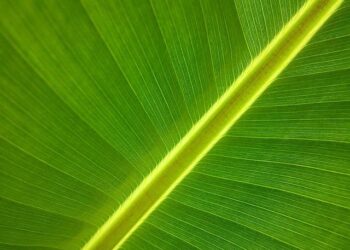Threatened pollinators
Despite their crucial role as pollinators, bees face significant threats worldwide. Habitat loss stands as the primary threat, but a range of other challenges exists, spanning from pollution to invasive species. While bees are vulnerable to insecticides, herbicides can also diminish their foraging opportunities. What researchers have recently grasped is that fungicides pose a problem as well, disrupting microbial interactions in the beesŌĆÖ pollen and nectar provisions, Gibbs explained.
Climate change poses an imminent threat to biodiversity, potentially disrupting the plants, temperature patterns, and environmental signals to which local bees have adapted. While mobile organisms like bees may have the ability to relocate to evade a warming climate, those accustomed to higher elevations, such as the recently identified bees, may struggle to adapt as they reach the limits of their habitat. With limited options for further upward migration, these organisms face heightened vulnerability. Locally, there are no clear-cut strategies to mitigate these risks. What is essential, Gibbs told Mongabay, is large-scale, coordinated efforts to mitigate climate change.
 Thilina Hettiarachchi studying bees in a lab. Image courtesy of Thilina Hettiarachchi.
Thilina Hettiarachchi studying bees in a lab. Image courtesy of Thilina Hettiarachchi.
Meanwhile, in Sri Lanka, experts emphasize the necessity for more research on wild bees. Although the country is home to 159 species of wild bees, the majority of research has been focused on a handful of commercially important species in agriculture, according to Inoka Karunaratne, a professor of zoology at the University of Peradeniya. Only six of these species are honeybees, producing honey and exhibiting a predominantly social structure with a queen, worker bees and male bees assigned specific tasks.
Conversely, the remaining wild bees ŌĆö more than 95% ŌĆö are solitary bees, commonly known as ŌĆ£pollen beesŌĆÖŌĆØ that do not form hives and receive minimal attention, despite their vital role in pollination, Karunaratne noted. These solitary bees typically nest on the ground or in cavities in wood or stems. They collect and carry pollen on their body and place it in small holes called ŌĆ£cellsŌĆØ in the nest burrow before laying an egg. ŌĆ£Bee species prefer different habitats, having different flowering plant species and nesting places, and if the correct environment is provided, many can still thrive,ŌĆØ Karunarathne said.
 One of the recently described bees is named Lasioglossum (Sphecodogastra) silveirai after late Brazilian bee taxonomist Fernando Silveira, whose work immensely contributed to the understanding of wild bees. Image courtesy of R.M. Carmo.
One of the recently described bees is named Lasioglossum (Sphecodogastra) silveirai after late Brazilian bee taxonomist Fernando Silveira, whose work immensely contributed to the understanding of wild bees. Image courtesy of R.M. Carmo.
Disparity in interest levels
When compared with bee studies in North America, Hettiarachchi observed a significant disparity in the level of interest and overall investment in entomological research in Sri Lanka. While numerous undescribed species still exist, particularly in North America, the majority of known species there are securely identified by scientific names. Furthermore, various museums in North America house well-curated and organized collections, which serve to promote further studies in the field.
In North America, many local- and national-level entomological societies serve as valuable platforms for students and researchers, facilitating the seamless sharing of their findings with an audience that shares the same passion for insects.
While in Sri Lanka, Hettiarachchi endeavored to promote pollinator-friendly landscapes. ŌĆ£We can attract bees to our gardens by planting bee-friendly trees that bear flowers that are rich in nectar and pollen, besides providing shelter to the bees,ŌĆØ Hettiarachchi added. Collaborating with Dilmah Conservation, Hettiarachchi worked to advocate for the Solitary Bee Hotel concept in Sri Lanka, offering specially designed shelters for solitary bees.
 A solitary bee house or a bee hotel developed by Thilina Hettiarachchi in Sri Lanka to attract bees to home gardens and to offer females nesting habitats. Image courtesy of Thilina Hettiarachchi.
A solitary bee house or a bee hotel developed by Thilina Hettiarachchi in Sri Lanka to attract bees to home gardens and to offer females nesting habitats. Image courtesy of Thilina Hettiarachchi.
A solitary bee house, also known as a bee hotel, consists of short tunnels and cavities where female solitary bees can lay their eggs. These structures are typically made from materials such as wood and sticks, including hollow bamboo sections, which provide suitable nesting sites. Placing these bee houses in the appropriate locations within a garden can attract these friendly pollinators and provide them with essential nesting opportunities.
Additionally, the recent paper contains an updated key for the North American Lasioglossum subgenera, which will be invaluable to ecologists and conservationists to be able to properly identify the myriads of small bees that are often the dominant, but unfortunately overlooked, pollinators in many natural and agricultural ecosystems.
Banner image: The recently described bees belong to the genus Lasioglossum and record the largest number of wild bees like this live specimen of different species in the subgenus Lasioglossum (Dialictus). Image courtesy of Thilina Hettiarachchi.
ItŌĆÖs the beeŌĆÖs needs: Study finds best plants for bee health, conservation
Citation:
Hettiarachchi, T., Gibbs, J.(2024). A problematic species complex for Lasioglossum subgeneric diagnostics in North America (Hymenoptera: Halictidae). Zootaxa, 5404 (1): 206ŌĆō235. doi: 10.11646/zootaxa.5404.1.13
![]()
Source link : https://news.mongabay.com/2024/09/__trashed-11/
Author :
Publish date : 2024-09-18 00:21:00
Copyright for syndicated content belongs to the linked Source.












